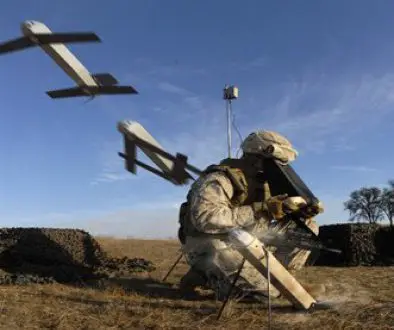Breaking news
US Army develops critical components for Lethal Miniature Aerial Missile System 52406161.
| 2016
|
|
|||
|
Defence & Security News - US Army
|
|||
|
|
|||
| US Army develops critical components for Lethal Miniature Aerial Missile System | |||
|
The U.S. Army Aviation and Missile Research, Development and Engineering Center assists in ensuring state-of-the art critical components exist for potential vendors.
|
|||
|
|
|||
 AMRDEC S&T Components have been flight tested in LMAMS, including the AeroVironment Switchblade. (Photo Credit: U.S. Army) |
|||
|
|
|||
|
More than 40 AMRDEC researchers and scientists developed and tested six critical component technologies in its Small Organic Precision Munition Program to support the LMAMS requirement. The six government-owned critical components are: the Small Warhead, the Small Electronic Safety and Arming Device, Power, Secure Micro Digital Data Link, Image Stabilization/Autotracker, and the Laser Ranging Height Of Burst Sensor.
The original intent for LMAMS -- a small, Soldier-launched loitering precision weapons system -- was to destroy combatant enemies such as snipers or those emplacing improvised explosive devices. This system not only allows Soldiers on the ground to engage with targets they cannot see, but can potentially be used to counter threat unmanned aircraft systems. This guided weapons system can fly to a specific coordinated position or be diverted with its wave-off capabilities to minimize collateral damage. "TRADOC outlines the warfighter requirements," said Mike Richman, associate director of Missile Development. "If the capability doesn't exist, AMRDEC invests Missile Science and Technology funds to help create a solution, and work with our partners at the Program Executive Office for Missiles and Space throughout the system lifecycle once it becomes a program of record." One vendor's solution to the LMAMS requirement is to use a miniature intelligence, surveillance, reconnaissance and lethal platform can be operated manually or semi-autonomously that has a 10-kilometer radius of operation and more than 10 minutes of battery endurance. "AMRDEC has exceeded the battery endurance requirement by doubling endurance from 15 minutes to 30 minutes. This battery technology also allows us to operate in colder temperatures than the previous Switchblade battery," said Spencer Hudson, AMRDEC Deputy Ground Tactical Capability Area Lead. Another critical component is the Secure Micro Digital Data Link, developed in partnership with the Air Force. "The Secure Micro Digital Data Link is National Security Agency Type 1 Suite B Certified. It can be used for up-to-Secret missions without the operator needing to have a security clearance to operate the system," Hudson said. AMRDEC also developed an autotracker capability. "We've developed our own government software, algorithms and hardware. We are trying to reduce the operator workload by making a tracker that is very robust, and all the components will be Technology Readiness Level 6 by FY16," said Devin Chamness, Capability Area Lead for Ground Tactical Missiles, WDI. "Although the components are being used... it is not the sole answer to LMAMS," Chamness said. "AMRDEC has multiple licensing and Cooperative Research and Development Agreements with other industry leaders. All potential vendors have the option of using AMRDEC's critical component technology." |
|||



















